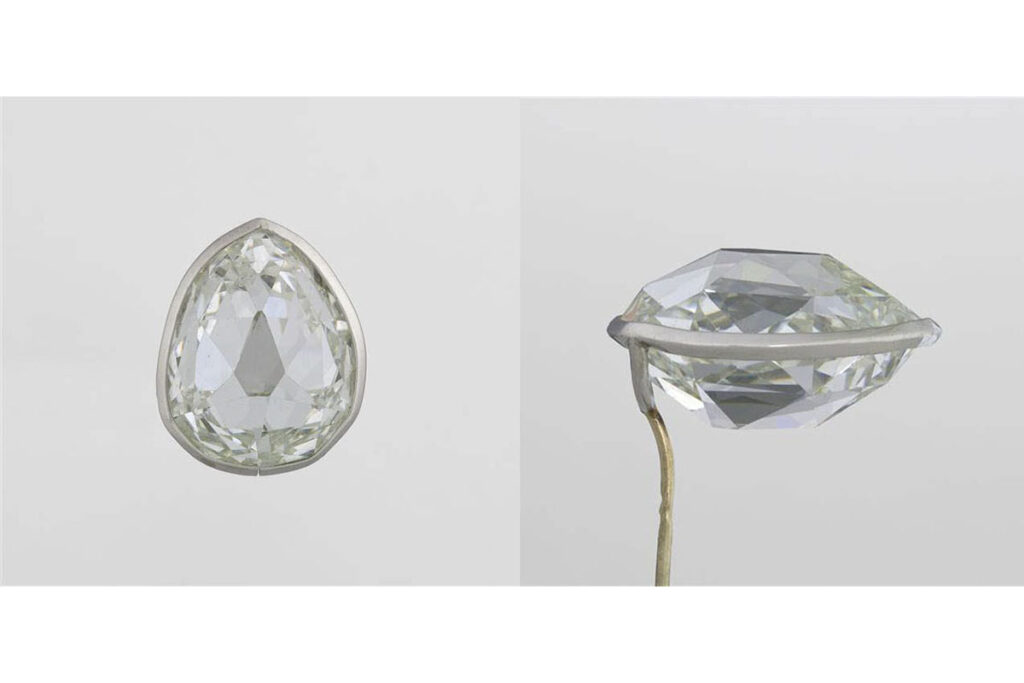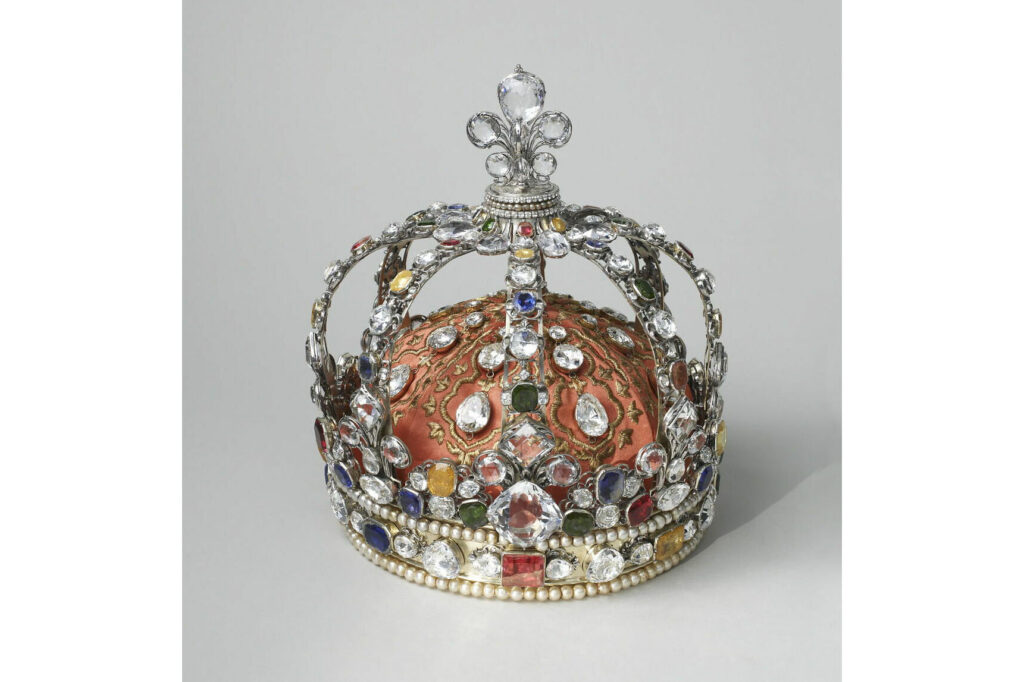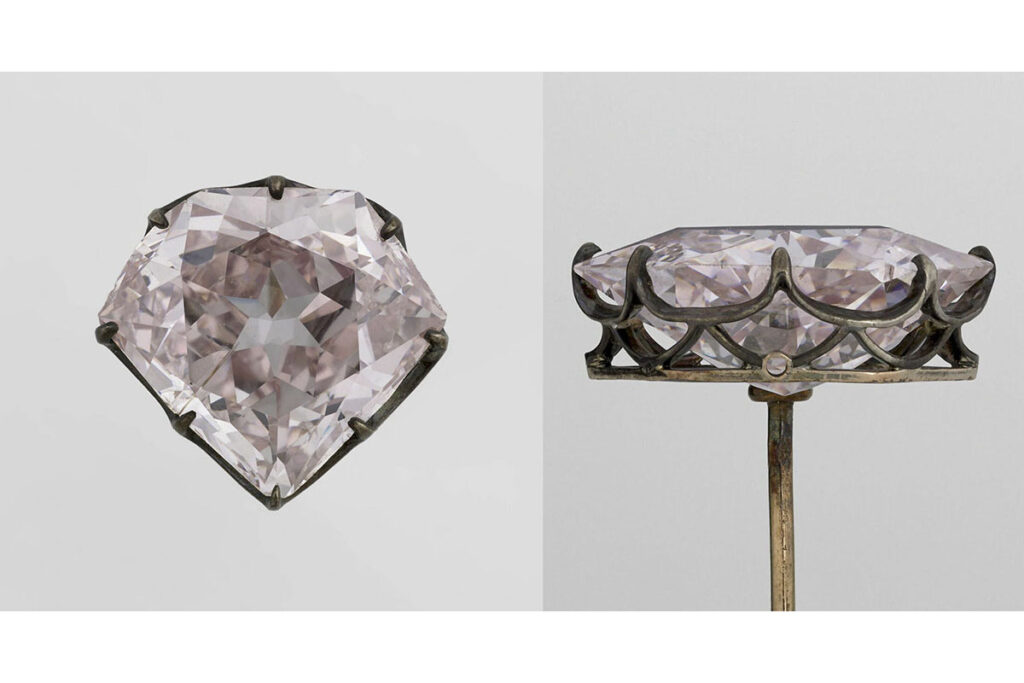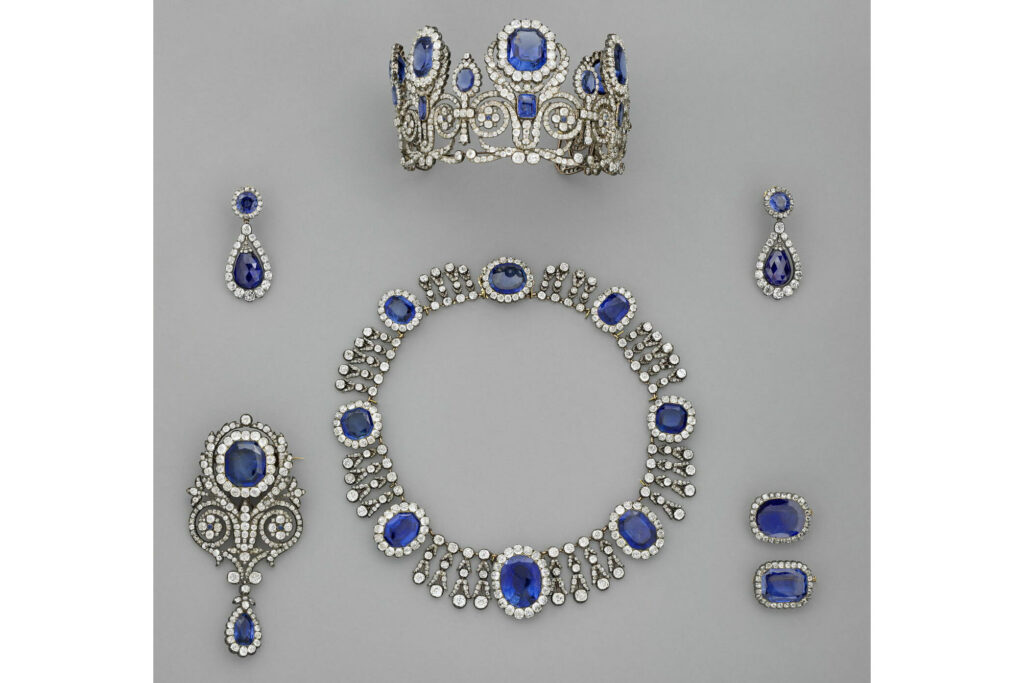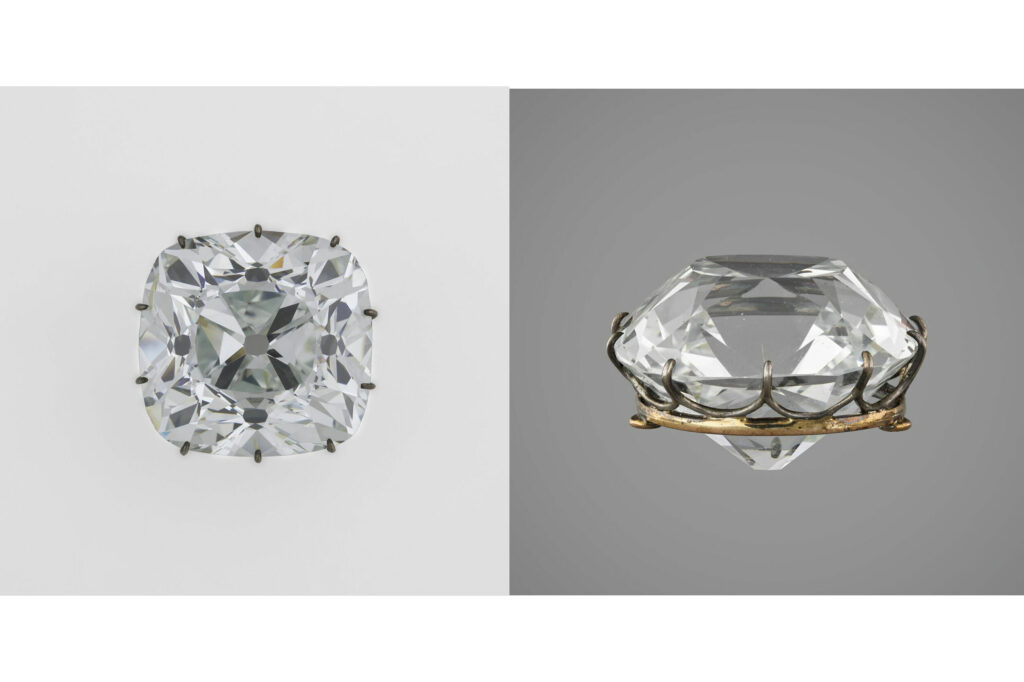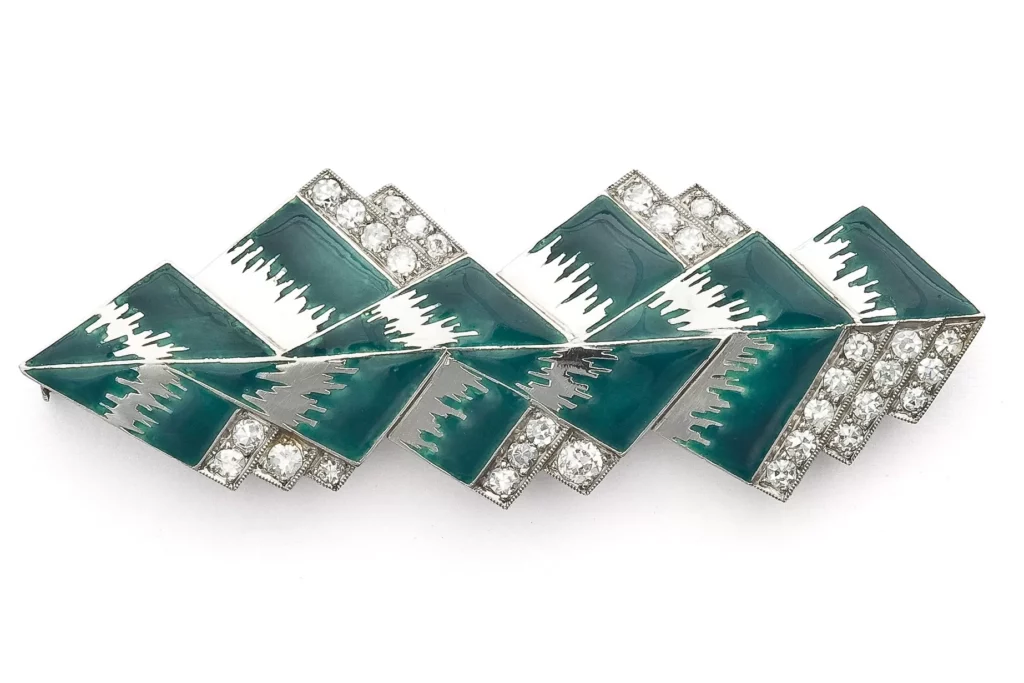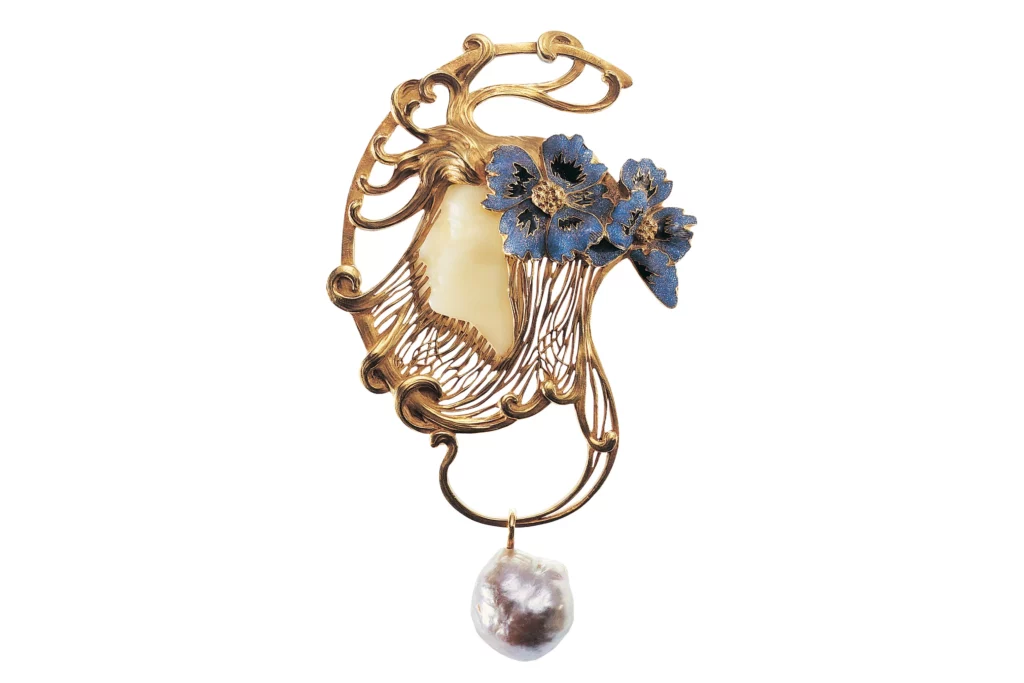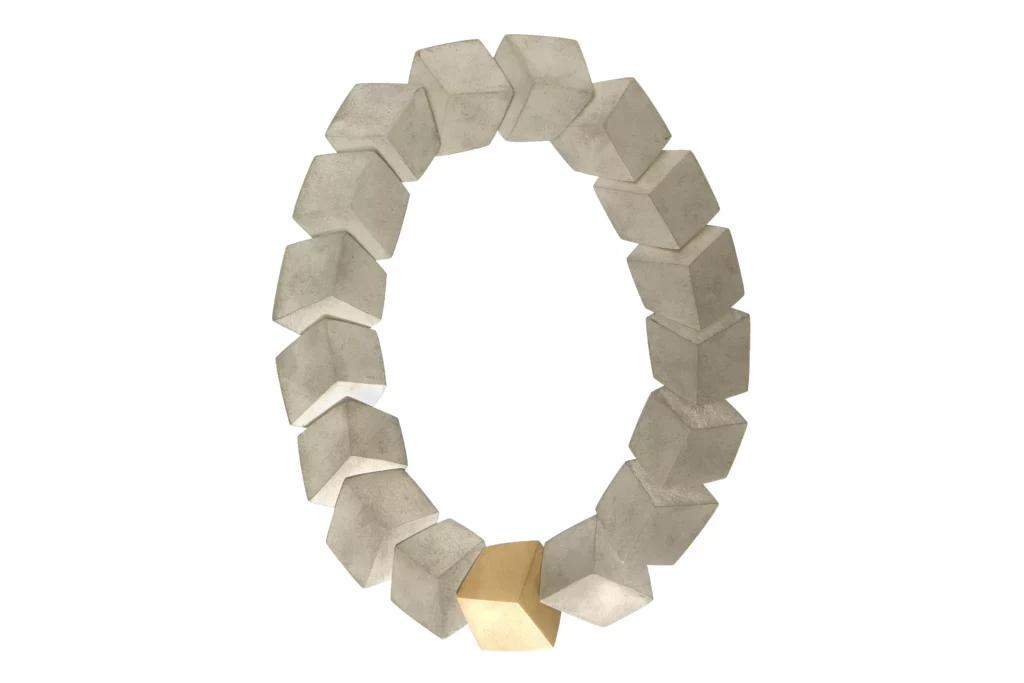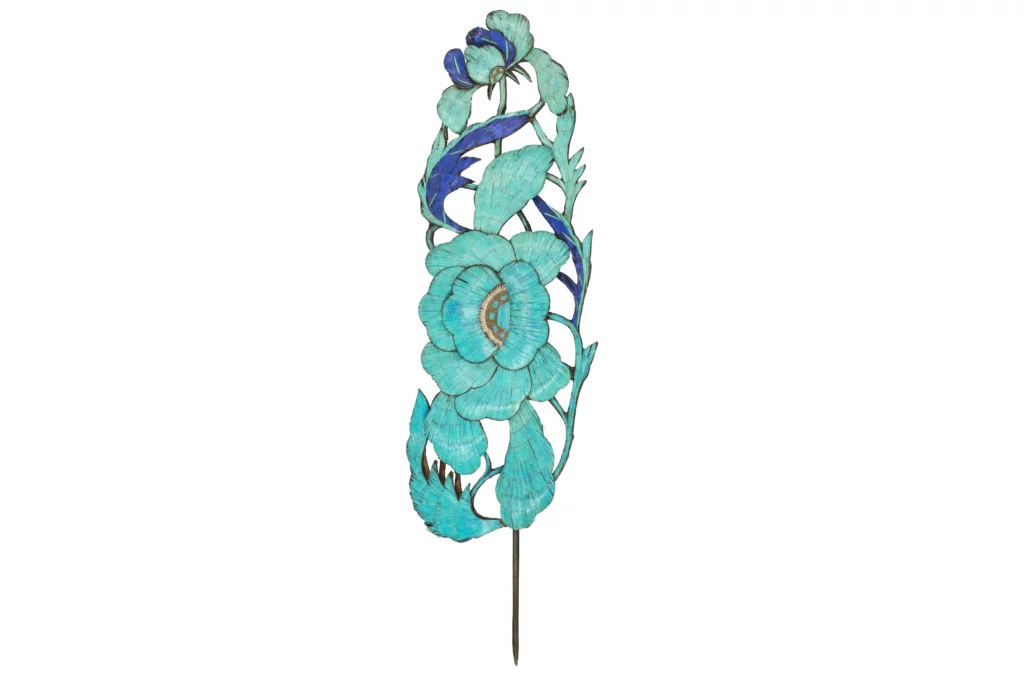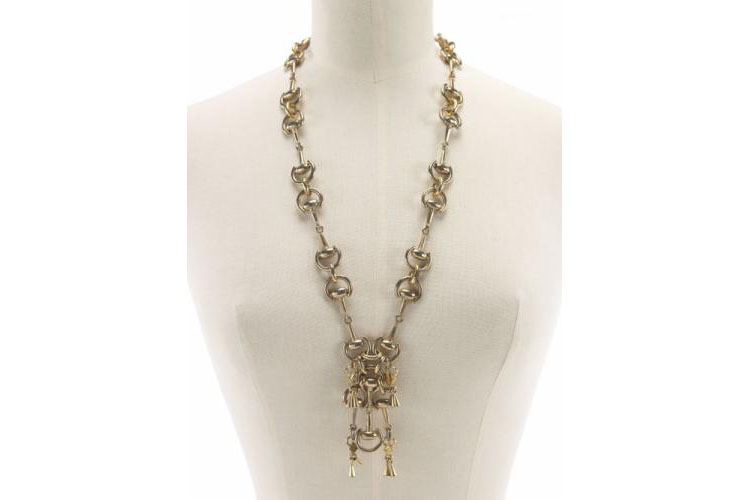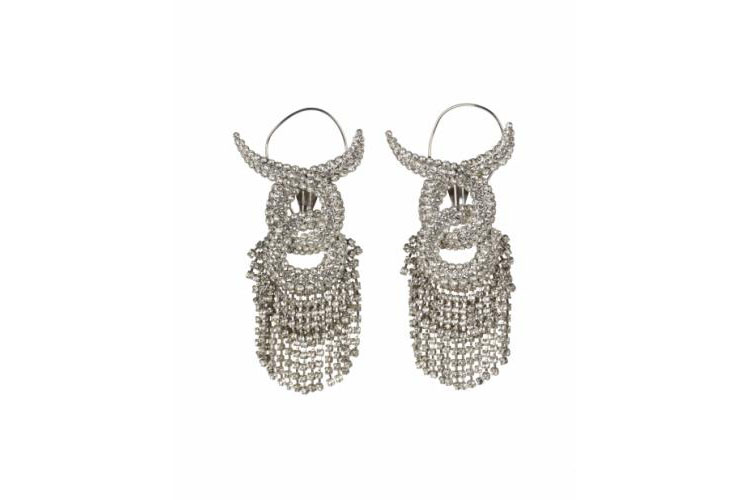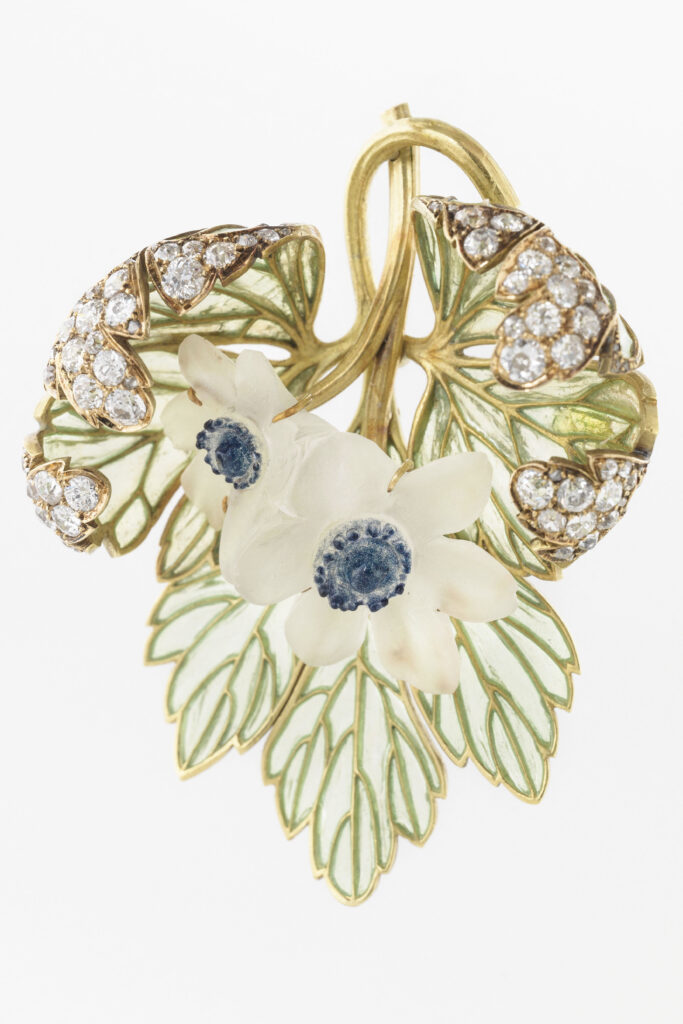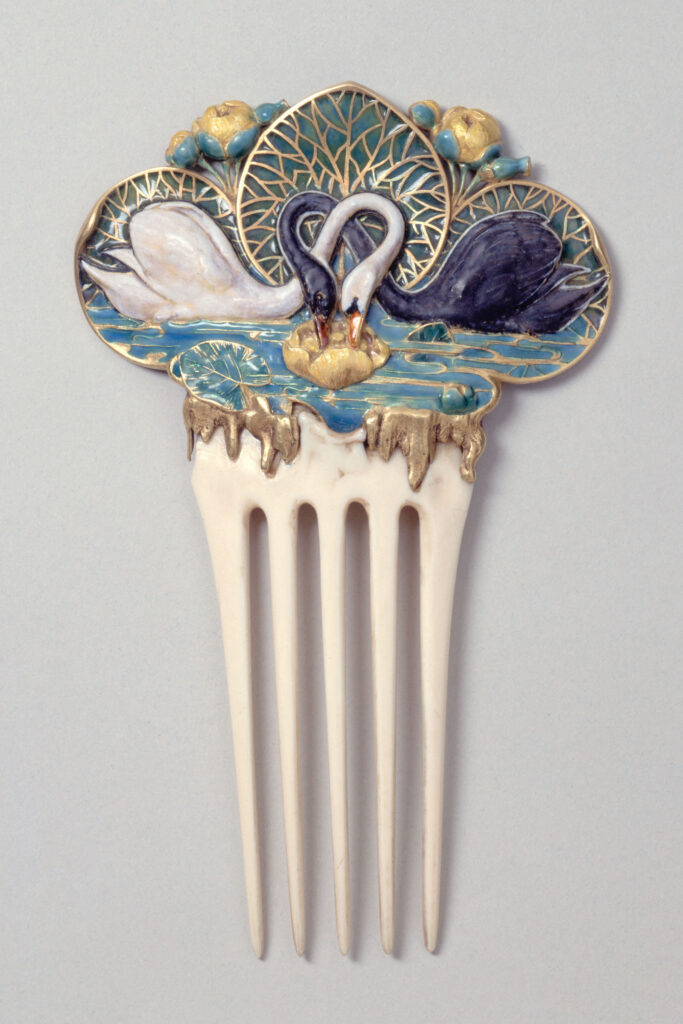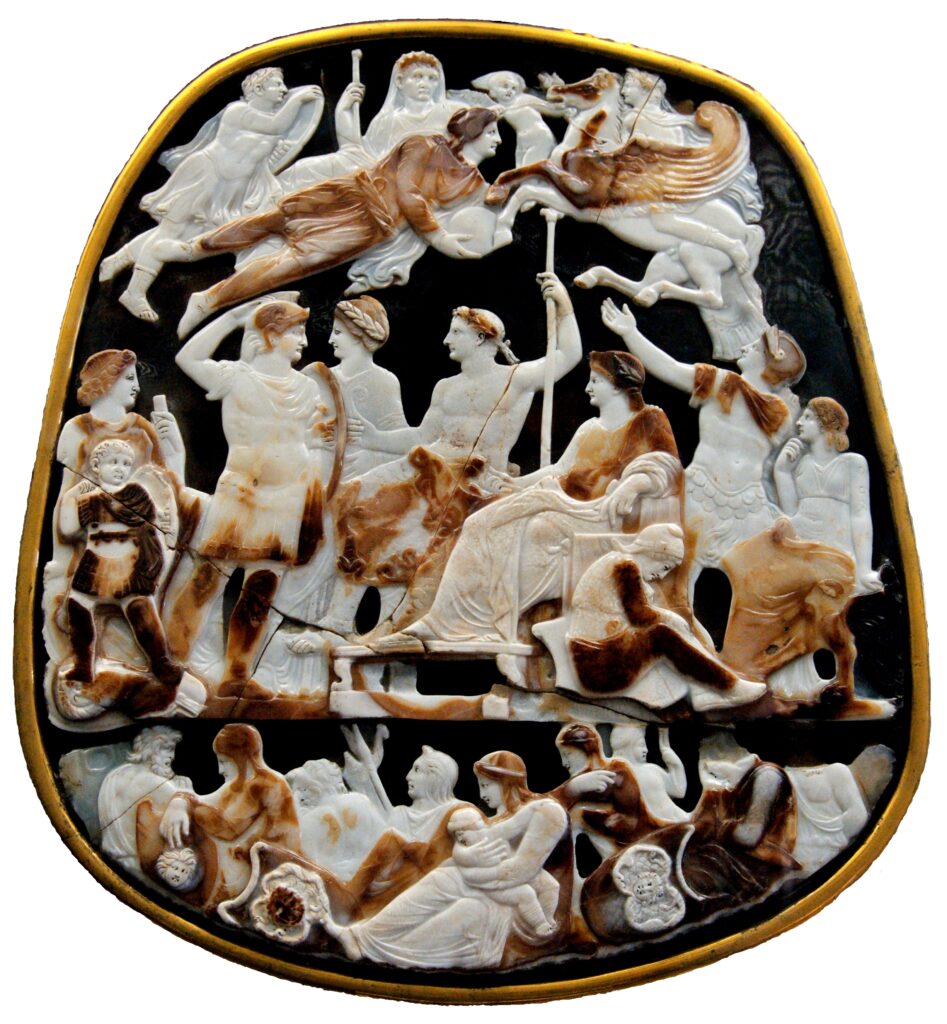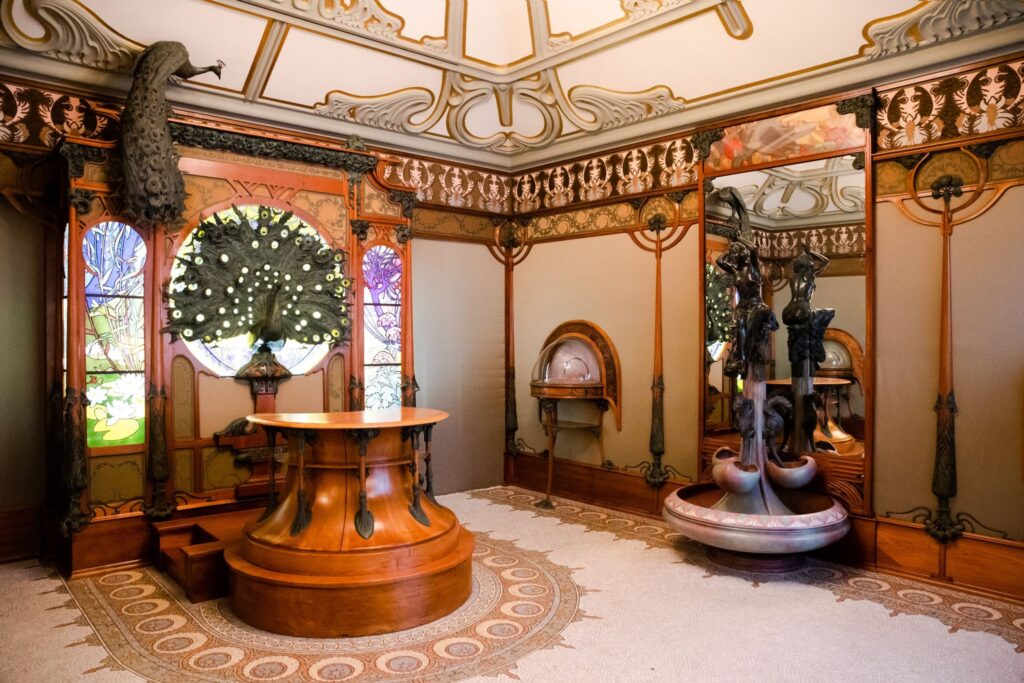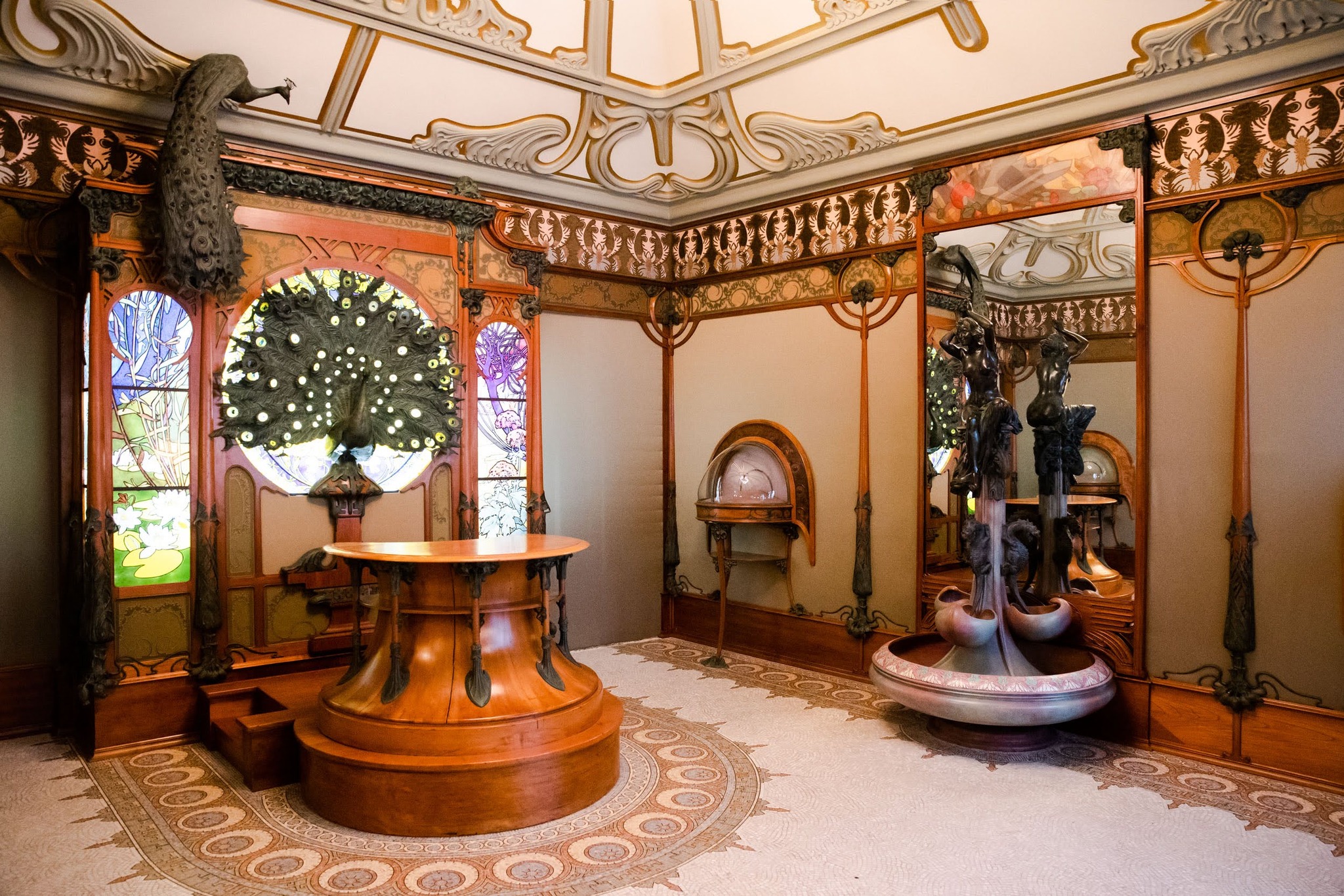
Are you on a weekend getaway or vacation in Paris and want to see the most beautiful antique jewelry in Paris museums? Follow the guide!
The Louvre Museum
The Louvre Museum is the most iconic museum in Paris. It has been intricately linked to the history of France for eight centuries. Among the 33,000 displayed artworks, you will find in the recently renovated Galerie d’Apollon the Crown Jewels of France. This term encompasses a collection of ancient objects and jewelry that once belonged to the French kings.
In the center of the room, three display cases have been installed. They house what remains at the Louvre from the Crown Jewels collection, founded in 1532 by King François I, passed down and enriched throughout history, but unfortunately sold off almost entirely by the state in 1887. The twenty-three jewels that still exist in the museum today are once again reunited in the gallery, where they are grouped into three sets: ancient jewelry predating the Revolution (including the Régent diamond, the Sancy diamond, and Louis XV’s personal coronation crown); ancient jewelry from the First Empire (Napoleon I era), the Restoration, and the July Monarchy; and finally, those from the Second Empire with magnificent sets adorned with precious stones.
To know about the access conditions, click here.
The Museum of Decorative Arts
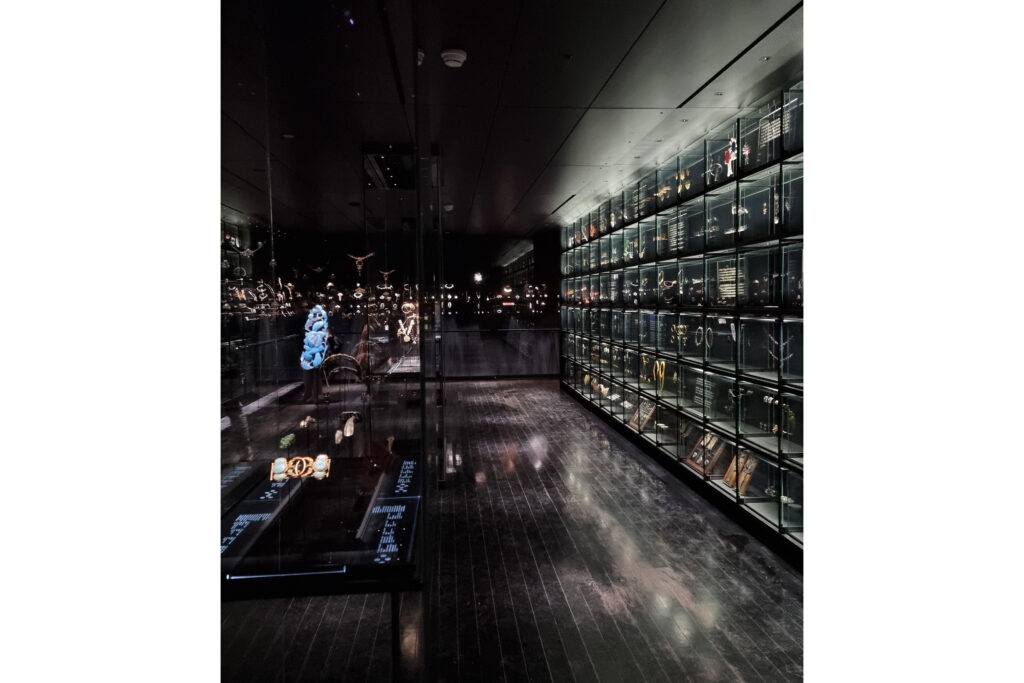
If you’re in Paris, you can’t miss the famous Jewelry Gallery at the Museum of Decorative Arts. Located on the second floor of the museum, the gallery covers two separate spaces connected by a walkway. The rooms are dimly lit, and large glass display cases showcase exceptional antique jewelry.
Art Nouveau jewelry is represented by an exceptional collection of pieces by René Lalique, Georges Fouquet, Lucien Gaillard, and the Vever house. Art Deco jewelry from the 1930s is primarily illustrated by creators like Raymond Templier, Jean Després, Jean Fouquet, and the leading houses of Place Vendôme, Boucheron, and Cartier.
Beyond the walkway, the journey continues in 1940 with pieces by French designers such as Line Vautrin, Albert Duraz, and artist’s jewelry (Georges Braque, Alexandre Calder, Henri Laurens, Jean Lurçat).
The renewal of forms in the 1960s-70s is covered with the sleek jewelry of Torun, Jean Dinh Van, Costanza, Henri Gargat, Ettore Sottsass, and creations by Scandinavian artists.
The museum regularly changes the displayed jewelry to highlight those kept in storage.
To know about the access conditions, click here.
The Palais Galliera
For lovers of antique jewelry and fashion, we recommend the Palais Galliera. This museum houses one of the richest collections in the world. Its collections include clothing, accessories, fashion jewelry, photographs, drawings, and more. This gathering of clothing and objects reflects French dress codes from the 18th century to the present day. Among this ensemble, you will see jewelry from Jacqueline De Ribes, Chanel, Christian Dior, and more.
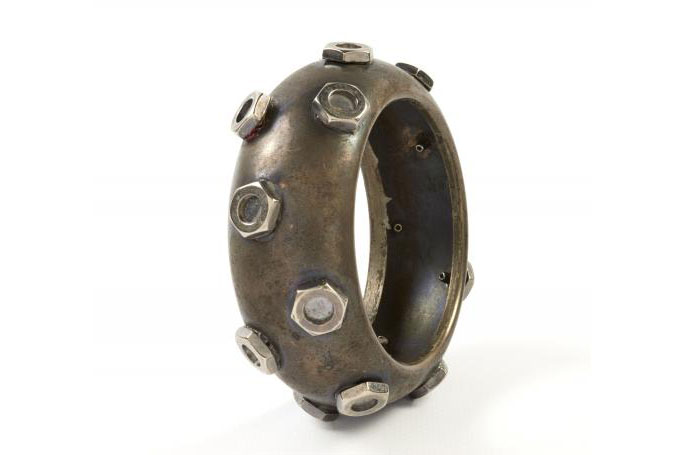
Palais Galliera
To know about the access conditions, click here.
The Petit Palais
The Petit Palais, built for the 1900 World’s Fair, is the Fine Arts Museum of the City of Paris. It houses artworks covering antiquity to the early 20th century. You can admire French, Flemish, Italian, and American paintings, as well as decorative objects and furniture by Gallé, Guimar, or Carabin. However, what interests you most is the collection of Art Nouveau jewelry located in the museum’s basement. You will find antique jewelry created by Georges Fouquet, Vever Frères, Henri Husson, gouache drawings by René Lalique, and more.
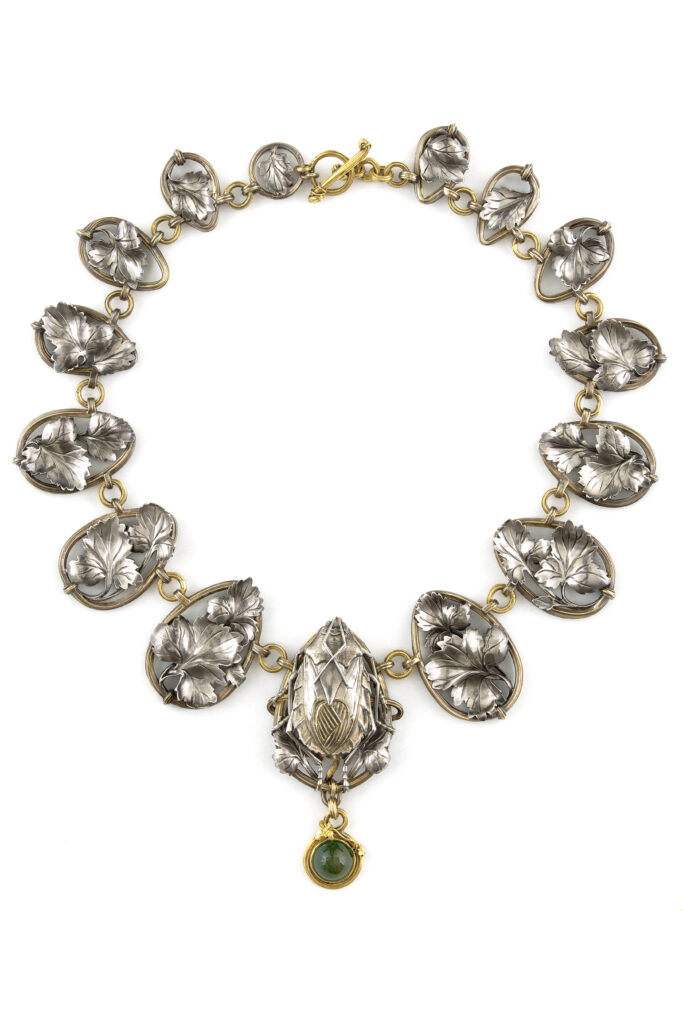
Not all the jewelry is visible at once; the museum exhibits a part of its stored collections in rotation.
To know about the access conditions: The Petit Palais is easily accessible by public transportation. The nearest metro station is Champs-Elysées Clemenceau (lines 1 and 13). You can also take RER C to the Invalides station or bus lines 28, 42, 72, 73, 80, 83, and 93.
The BnF Museum
The new BnF museum preserves around 900 exceptional works from antiquity to the present day. Rare pieces are on display, such as the Grand Camée de France. In the precious cabinet – Sisley-D’Ornanov room, you can discover mainly metal objects: medals, jewelry, engraved stones (cameos, intaglios), precious metal tableware.
These extraordinary pieces are displayed alongside prints from Rembrandt to Picasso, drawings by Sonia Delaunay, photographs from Nadar to Capa, objects, and costumes.
To know about the access conditions, click here.
“Bonuses” to See in Paris
Bonus 1: Carnavalet Museum
At the Carnavalet Museum, we recommend visiting the façade and reconstructed store of La bijouterie Fouquet. Dating back to the Art Nouveau era, this store is an architectural gem created in 1901 by Alphonse Mucha, A. Seysses, and L. Fargue. The jewelry store was dismantled in 1923 and reassembled at the Carnavalet Museum.
Bonus 2: School of Jewelry Arts (with the support of Van Cleef & Arpels)
The School of Jewelry Arts organizes free, high-quality exhibitions throughout the year on gemstones and the history of jewelry.
If you come to Paris in the year 2023, you will be able to see the exhibition “STAGE JEWELS OF THE COMÉDIE-FRANÇAISE.” This free exhibition brings together a wide collection of stage jewelry worn by the most famous actors and actresses – Talma, Rachel, Sarah Bernhardt, among others – tracing a history of stage jewelry since the 18th century. Jewelry, paintings, drawings, manuscripts all bear witness to the opulence of these objects, which, often made from non-precious materials, still demonstrate the craftsmanship of jewelry-making.
The exhibition is available from October 6th to February 4th, 2023, at the École des Arts Joailliers – Hôtel de Mercy-Argenteau, 16 bis Boulevard Montmartre, 75009 Paris. For more information, click here.
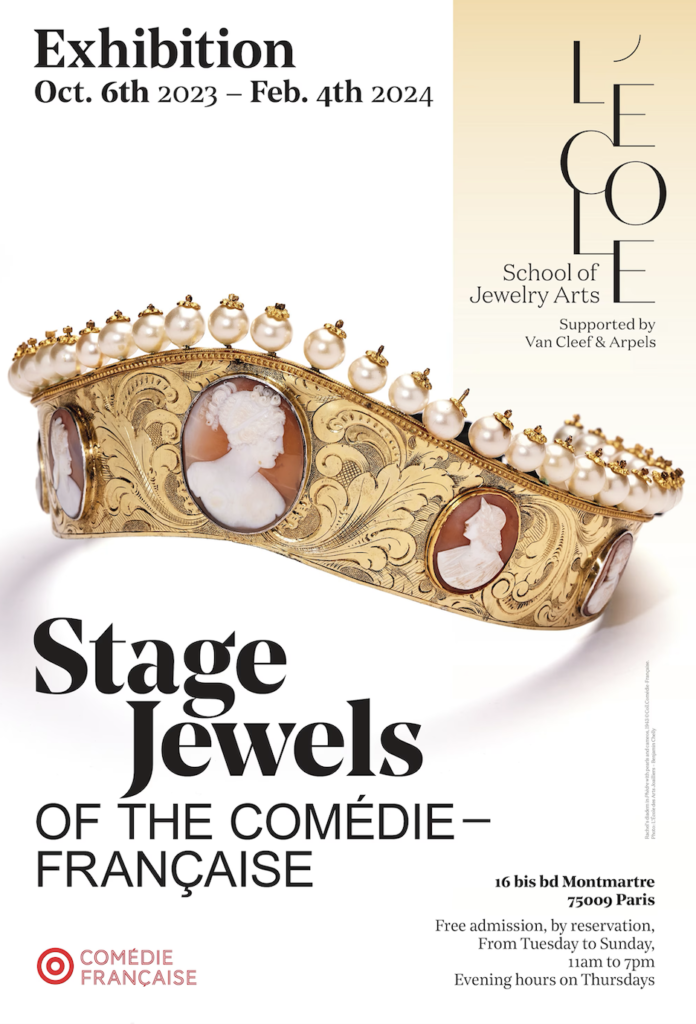
The School of Jewelry Arts also organizes multiple online conferences on precious stones and the history of jewelry. The yearly guide can be found here.
You may also be interested in our article “Where to Buy Antique Jewelry in Paris?”

